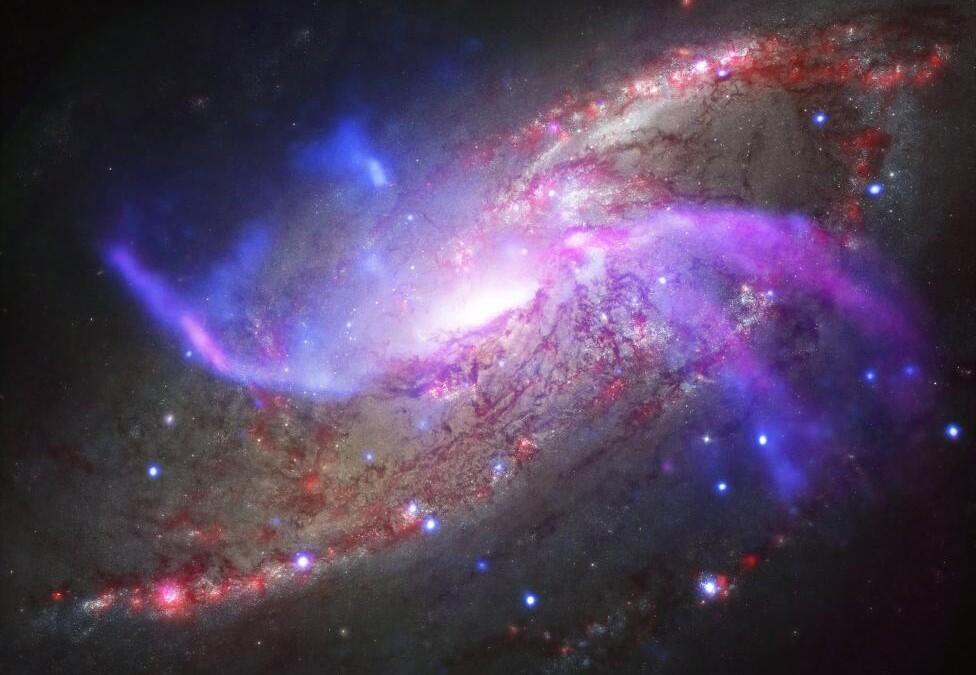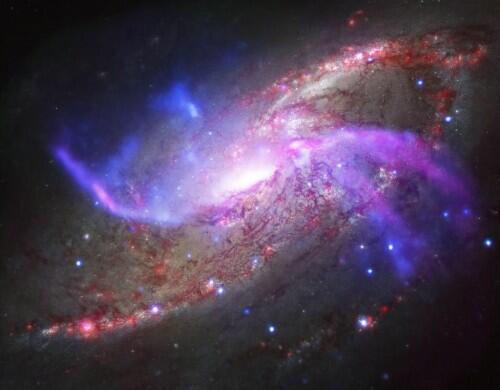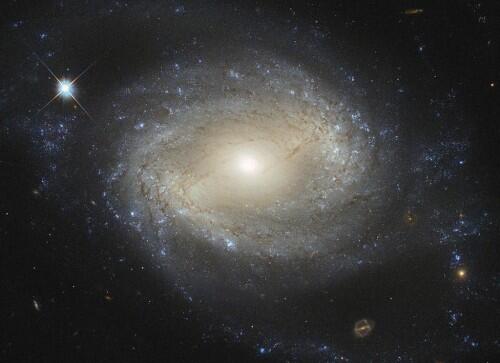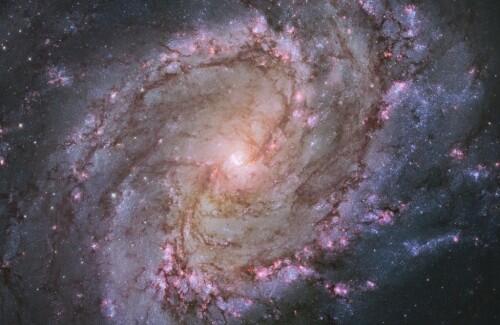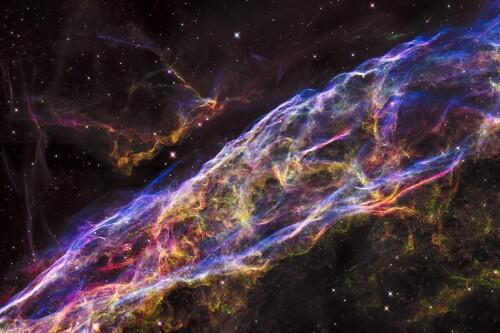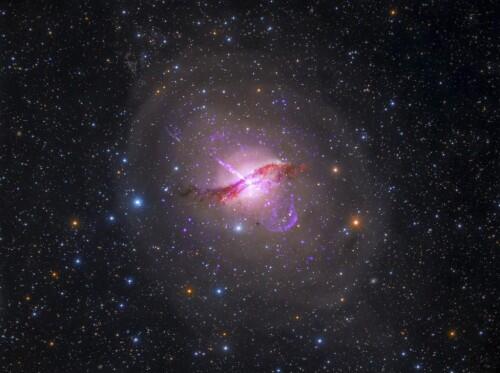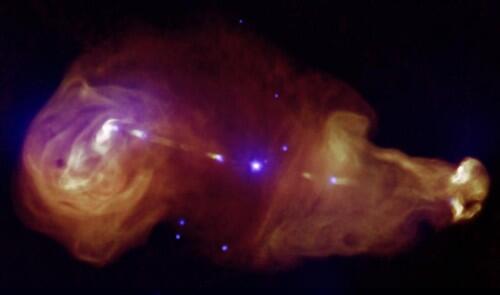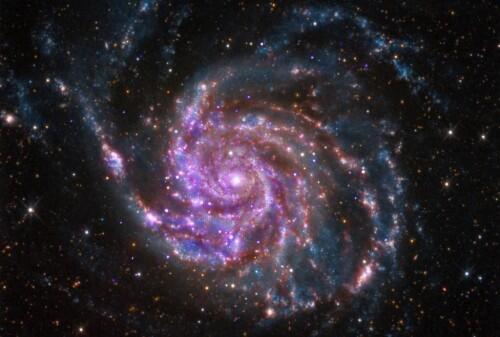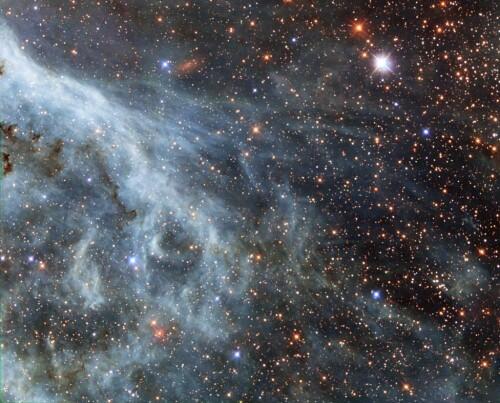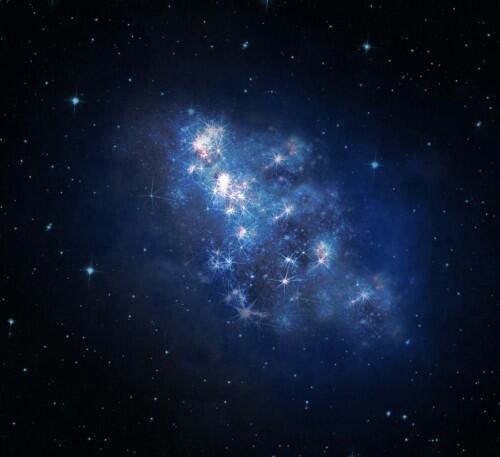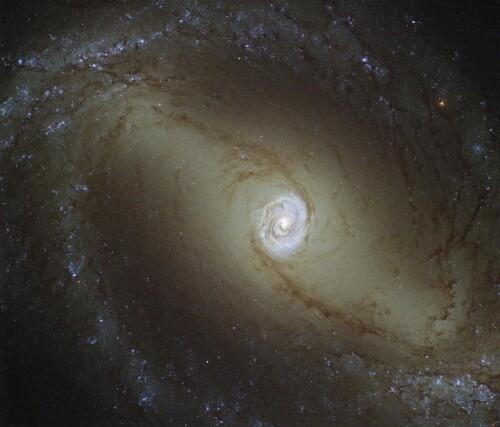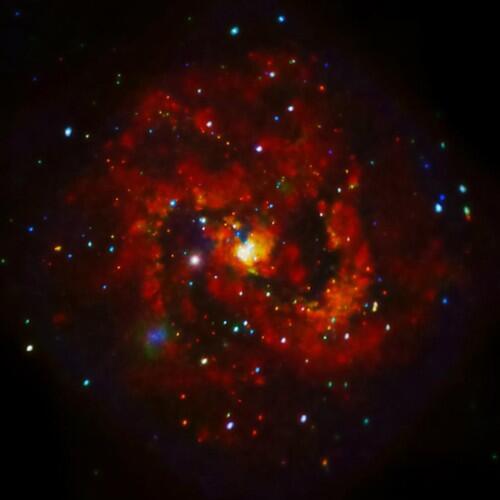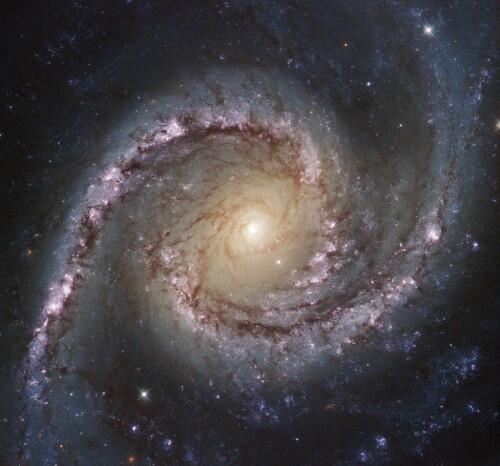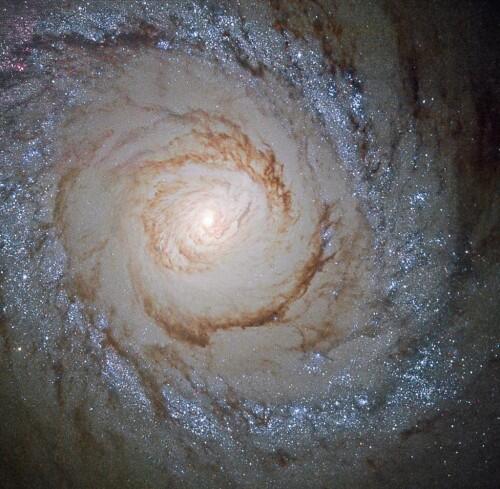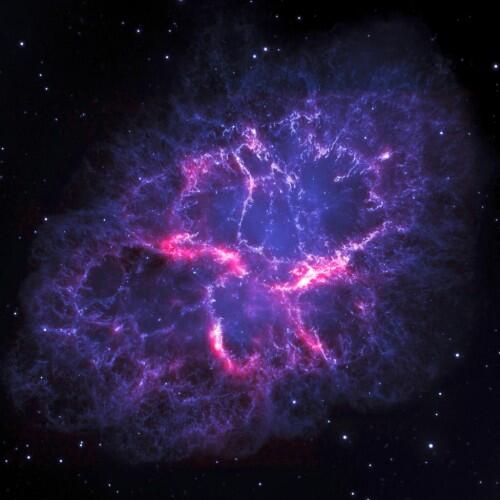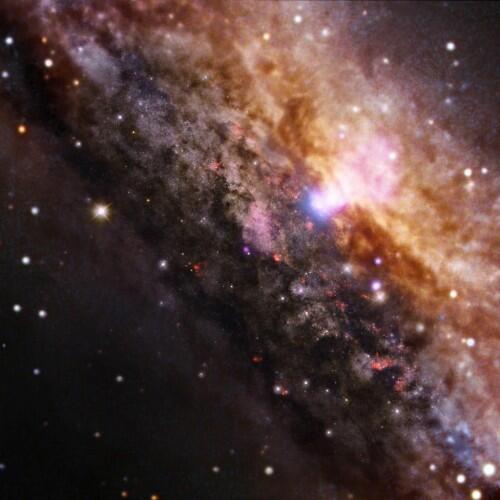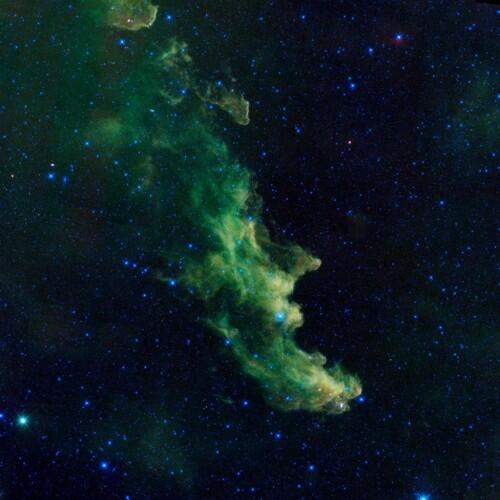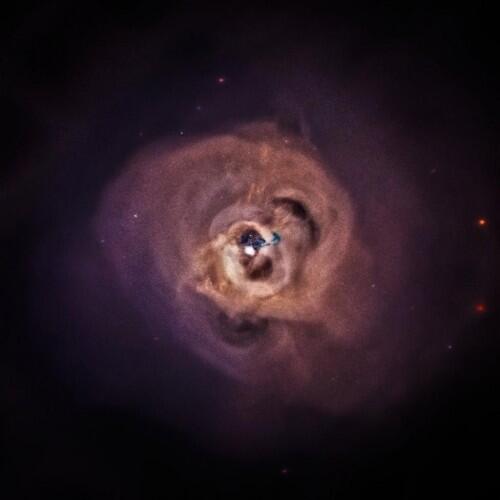The following pictures show the beauty of the distant galaxies, knowing that there are about 50 galaxies in the Local Group, on the order of 100,000 in our Local Super-cluster and an estimated number of about 100 to 200 billion in all of the observable universe.
An artist’s impression of the galaxies found in the Zone of Avoidance behind the Milky Way. An Australian telescope used to broadcast man’s first steps on the moon in 1969 has found hundreds of new galaxies hiding behind the Milky Way using an innovative receiver that measures radio waves.
REUTERS/ICRAR
The spiral galaxy NGC 4258, also known as M106, has two extra spiral arms.
REUTERS/NASA
The barred spiral galaxy NGC 4639, which lies over 70 million light-years away in the constellation of Virgo and is one of about 1500 galaxies that make up the Virgo Cluster. NGC 4639 also conceals a massive black hole that is consuming the surrounding gas.
REUTERS/ESA/Hubble/NASA
The barred spiral galaxy M83, also known as the Southern Pinwheel. The Hubble photograph captures thousands of star clusters, hundreds of thousands of individual stars, and “ghosts” of dead stars called supernova remnants.
REUTERS/NASA
A small section of the expanding remains of the Veil Nebula, a massive star that exploded about 8,000 years ago. The entire nebula is 110 light-years across, covering six full moons on the sky as seen from Earth, and resides about 2,100 light-years away in the constellation Cygnus, the Swan.
REUTERS/NASA/ESA/Hubble Heritage Team
The fifth brightest galaxy in the sky Centaurus A, an active galaxy about 12 million light years from Earth.
REUTERS/NASA
Giant plumes of radiation from galaxy 3C353, a wide, double-lobed active galaxy that is very luminous at radio wavelengths, where the galaxy is the tiny point in the center. Jets generated by supermassive black holes at the centers of galaxies can transport huge amounts of energy across great distances. REUTERS/NASA
The galaxy M101, a spiral galaxy like our Milky Way, but about 70 percent bigger. It is located about 21 million light years from Earth.
REUTERS/NASA
A section of the Tarantula Nebula, located within the Large Magellanic Cloud, a small nearby galaxy that orbits our galaxy, the Milky Way, and appears as a blurred blob in our skies.
REUTERS/NASA
An artist’s rendering of the galaxy, known by its catalog name z8_GND_5296. Light from the galaxy took about 13.1 billion years to reach the orbiting Hubble Space Telescope and the Keck Observatory in Hawaii, both of which detected the galaxy in infrared light.
REUTERS/Hubble Space Telescope/NASA
A spiral galaxy known as NGC 1433. At about 32 million light-years from Earth, it is a type of very active galaxy known as a Seyfert galaxy, a classification that accounts for 10 percent of all galaxies.
REUTERS/ESA/Hubble/NASA
M83, a spiral galaxy about 15 million light years from Earth, is one of the deepest X-ray observations ever made of a supernova from a spiral galaxy beyond our own. This full-field view of the spiral galaxy shows the low, medium, and high-energy X-rays observed in red, green, and blue respectively. The distribution of X-rays with energy suggests that SN 1957D contains a neutron star, a rapidly spinning, dense star formed when the core of pre-supernova star collapsed. This neutron star, or pulsar, may be producing a cocoon of charged particles moving at close to the speed of light known as a pulsar wind nebula. If this interpretation is confirmed, the pulsar in SN 1957D is observed at an age of 55 years, one of the youngest pulsars ever seen.
REUTERS/NASA
NGC 1566, a galaxy located about 40 million light-years away in the constellation of Dorado. According to NASA, the NGC 1566 is an intermediate spiral galaxy. That means while the NGC 1566 does not have a well defined bar-shaped region of stars at its center, like barred spirals, it is not quite an unbarred spiral either. The small but extremely bright nucleus of the NGC 1566 is clearly visible in this image, a telltale sign of its membership of the Seyfert class of galaxies. The centers of such galaxies are very active and luminous, emitting strong bursts of radiation and potentially harboring supermassive black holes that are many millions of times the mass of the Sun. NGC 1566 is the second brightest Seyfert galaxy known. It is also the brightest and most dominant member of the Dorado Group, which is a loose concentration of galaxies that collectively comprise one of the richest galaxy groups of the southern hemisphere. REUTERS/ESA/Hubble/NASA
The galaxy Messier 94, which lies in the small northern constellation of the Hunting Dogs, about 16 million light-years away. Within the bright ring around Messier 94 new stars are forming at a high rate and many young, bright stars are present within it. REUTERS/ESA/NASA
A composite view of the Crab nebula, an iconic supernova remnant in our Milky Way galaxy. The Crab is arguably the single most interesting object, as well as one of the most studied, in all of astronomy. The Crab Nebula is one of the most intricately structured and highly dynamical objects ever observed.
REUTERS/ESA/NASA
Galaxy NGC 4945 is similar in overall appearance to our own Milky Way, but contains a much more active supermassive black hole within the white area near the top.
REUTERS/NASA
The Witch Head nebula, named after its resemblance to the profile of a witch. Astronomers say the billowy clouds of the nebula, where baby stars are brewing, are being lit up by massive stars. Dust in the cloud is being hit with starlight, causing it to glow with infrared light.
REUTERS/NASA
The Perseus Cluster, one of the most massive objects in the Universe containing thousands of galaxies immersed in an enormous cloud of superheated gas.
REUTERS/NASA

